Defamation of Character Letter Template for Legal Purposes
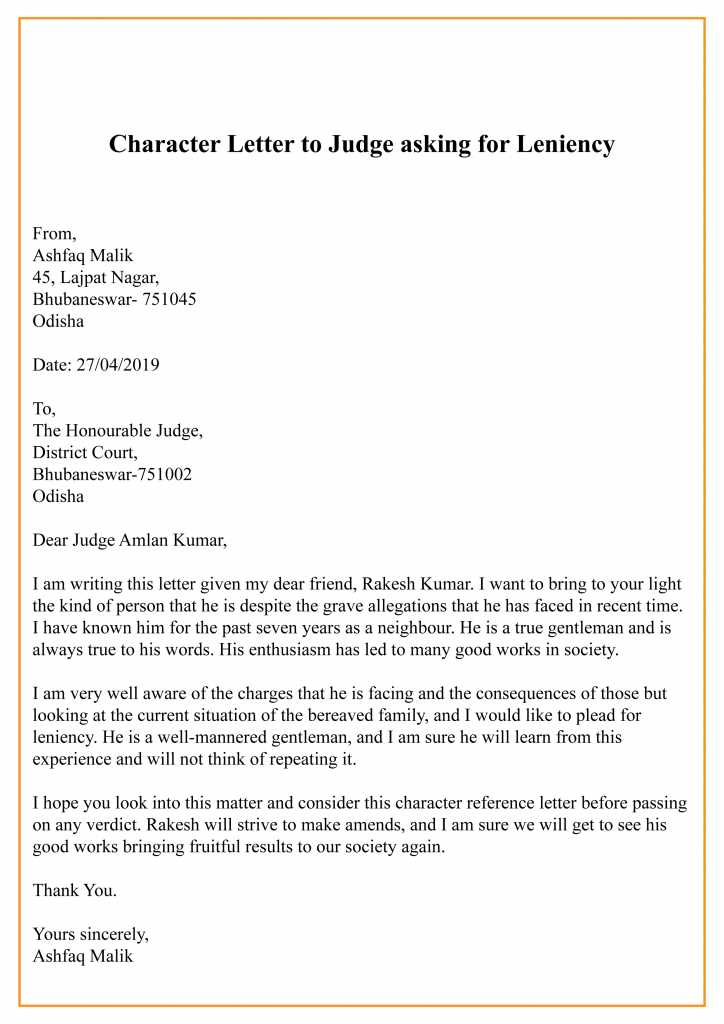
When false statements harm one’s reputation, it is essential to take action to protect personal integrity. Addressing these issues promptly and professionally can prevent further damage and encourage resolution. Writing a formal response can serve as a clear, legal step in defending oneself against misleading or harmful accusations.
Effective communication plays a critical role in such situations, as a well-drafted response can express the seriousness of the matter without escalating tensions unnecessarily. This communication may encourage the other party to reconsider their actions or lead to legal actions if needed. Crafting a message that is both firm and respectful is essential to maintaining a professional tone while addressing the issue at hand.
Taking the right approach can make a significant difference in the outcome. By understanding how to structure the communication and what elements to include, you can ensure that your rights are protected and that your response is clear and legally sound.
How to Structure Your Response
When confronted with false accusations that threaten your reputation, it is important to respond with a clear and professional statement. The goal is to address the situation in a manner that is both firm and respectful, outlining your concerns while offering a path toward resolution. Knowing how to organize and word such a response is key to ensuring its effectiveness.
Key Elements of a Formal Response
A well-constructed response should include several essential components. First, clearly state the accusation and its impact on your personal or professional life. Follow with a direct but polite challenge to the false information, providing any evidence or facts that may help clarify the situation. Lastly, outline any desired actions or remedies you seek, whether it be a public correction or a more formal legal process.
Ensuring Professional Tone
While it is important to stand your ground, maintaining a professional tone throughout the communication is crucial. A respectful, measured response helps demonstrate that you are serious about the matter without resorting to unnecessary confrontation. Keeping the language neutral and focused on facts ensures that your message is taken seriously and leaves room for constructive dialogue.
Understanding Legal Aspects of Defamation
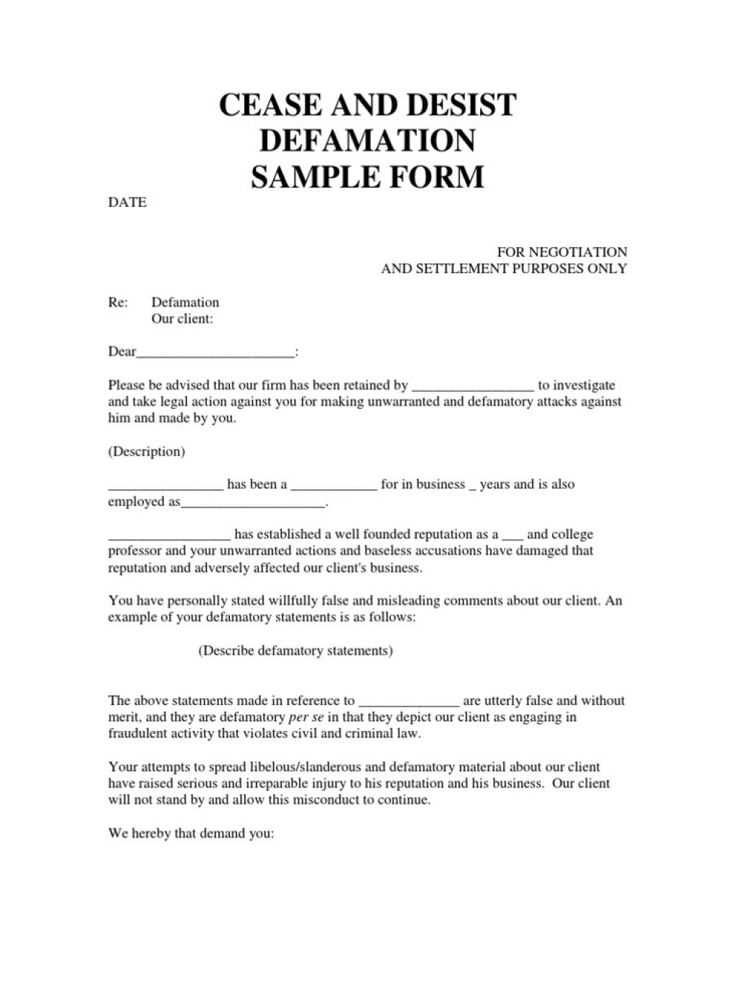
When false statements are made that harm a person’s reputation, there are legal avenues available to address the issue. It’s important to understand the legal foundations of such claims, as this can help in formulating a proper response and taking appropriate action. Being aware of your rights and the conditions that must be met for legal recourse is crucial in navigating these situations effectively.
Elements of a Valid Legal Claim
In order for a claim to be considered legally valid, certain elements must be present. First, the statement in question must be false, as truth is a key defense in most legal systems. Additionally, the statement must have been communicated to a third party, resulting in harm to the individual’s reputation. Lastly, the harm caused must be significant enough to warrant legal intervention, typically affecting personal or professional standing.
Legal Defenses and Protections
There are several defenses that can be used against a claim, including proving the statement was true or protected under the law, such as in cases of free speech. In some jurisdictions, certain types of speech, like opinions or matters of public interest, may be immune from legal action. Understanding these defenses is essential before pursuing or defending against any legal claim related to false accusations.
Essential Components of a Demand Letter
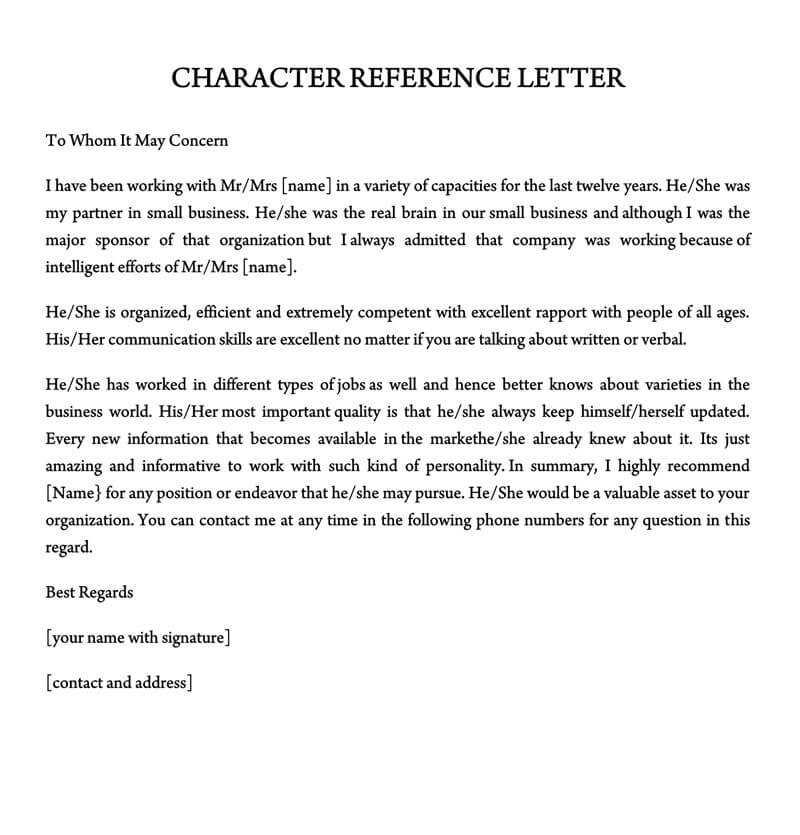
A formal communication intended to address false allegations should be clear, direct, and well-organized. The key to an effective response lies in including specific elements that outline the issue, request a resolution, and set expectations for further actions. Knowing what to include ensures your message is taken seriously and stands up to legal scrutiny if needed.
First, begin with a clear statement of the accusation and its impact on your reputation or livelihood. This sets the stage for your response and highlights the seriousness of the situation. Next, offer factual evidence or reasoning to dispute the false claims, demonstrating why the statements are inaccurate. Finally, specify the action you seek, whether it’s a retraction, apology, or other remedies, and a deadline for compliance. The tone should remain professional and assertive, indicating your intention to resolve the issue amicably while making clear the potential for further steps if necessary.
Personalizing Your Defamation Response
Crafting a response that is tailored to your specific situation is crucial when addressing false claims. A generic or overly formal reply might not convey the necessary urgency or sincerity. Personalizing your message allows you to effectively communicate the gravity of the situation while maintaining a professional tone. This approach ensures that the recipient understands the personal impact and the seriousness of your request.
Addressing the Specifics of the False Claims
One of the most important aspects of a personalized response is to directly address the false statements. Clearly reference the specific words or actions that have harmed you, and explain how they have affected your life or reputation. Providing context or details that show the extent of the damage reinforces the seriousness of the issue.
Setting Clear Expectations for Resolution
Once you’ve outlined the problem, it’s essential to communicate the desired outcome. Be clear about what you expect from the other party, whether it’s a public apology, a correction, or another remedy. Setting a reasonable deadline for resolution shows that you are serious and expect prompt action, while also leaving room for negotiation if needed.
Common Errors to Avoid in Letters
When addressing false accusations or harmful statements, it’s essential to avoid certain mistakes that can undermine the effectiveness of your communication. A well-constructed response can help resolve the issue, but common missteps can weaken your case or even escalate the situation. By understanding and avoiding these errors, you can ensure that your message is clear, professional, and impactful.
Key Mistakes to Watch Out For
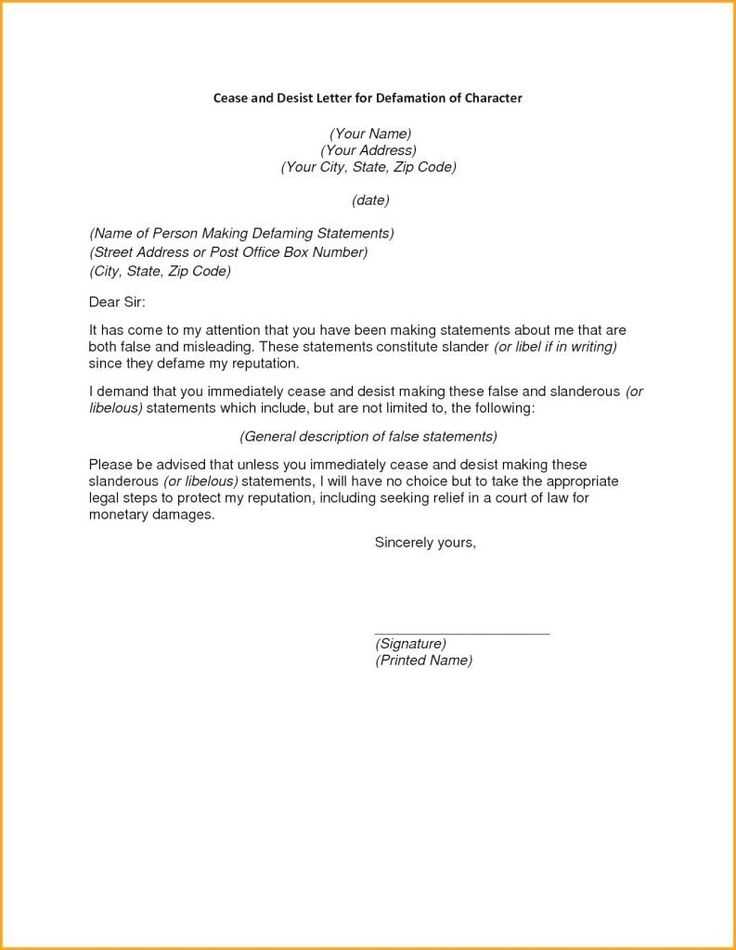
- Being overly emotional: While it’s natural to feel upset, letting emotions dictate the tone of your message can lead to unnecessary conflict. Stay calm and factual in your approach.
- Using vague language: Ambiguous statements can weaken your position. Be specific about the false claims and how they have affected you.
- Failing to include evidence: Without clear evidence or reasoning to support your case, your response may not be taken seriously. Always provide facts that challenge the false accusations.
- Overlooking the recipient’s perspective: Consider how your message will be received. A respectful and professional tone increases the likelihood of a positive outcome.
- Not setting a clear deadline: Without a defined timeline for resolution, the recipient may not feel a sense of urgency. Clearly state when you expect a response or corrective action.
Further Considerations
- Unnecessary legal jargon: While it’s important to be firm, using excessive legal language can alienate the reader and detract from the clarity of your message.
- Ignoring potential defenses: Be aware of possible legal defenses the other party may raise. Addressing them upfront can help avoid delays or confusion later on.
Timing Your Defamation Letter Delivery
Choosing the right moment to send a formal response is critical to the success of your efforts. The timing of your communication can influence how it is received and how effectively it resolves the issue. Sending the message too soon may come off as hasty, while waiting too long could lead to further harm. Understanding when to act ensures that your response is both impactful and appropriate.
Evaluating the Situation
Before sending your response, take time to assess the severity of the situation. If the false claims have just been made, it might be beneficial to give the other party some time to retract or correct the statements on their own. However, if the harm is ongoing or escalating, immediate action is necessary to prevent further damage. Consider the nature of the false claims and their immediate effects on your reputation when deciding the urgency of your response.
Setting a Reasonable Deadline
It’s important to give the recipient a clear and reasonable deadline to respond or take corrective action. This creates a sense of urgency without being overly aggressive. Setting a firm deadline also provides you with a timeline for follow-up, whether it’s to pursue further steps or seek legal advice. The time frame should reflect the seriousness of the situation while allowing the other party an opportunity to address the issue promptly.
Next Steps After Sending the Letter
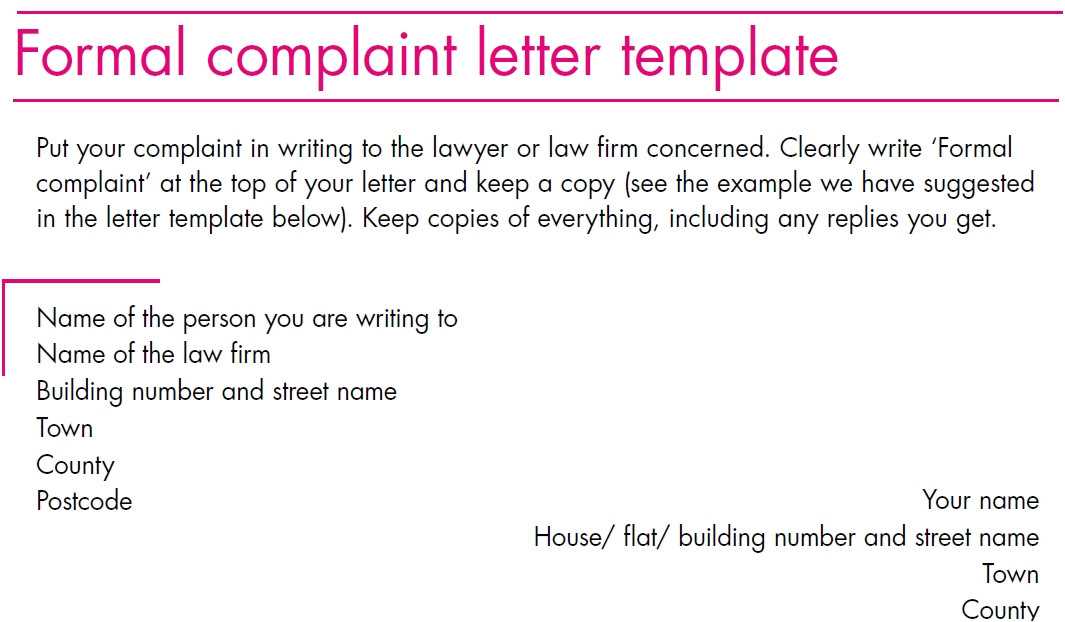
After sending your formal communication, it’s important to plan your next moves carefully. The way you handle the situation following your response can determine whether it leads to a resolution or requires further action. Knowing the appropriate steps ensures that you’re prepared for any outcome and helps you remain in control of the process.
Monitoring the Response
Once the message has been sent, give the recipient a reasonable amount of time to respond. Monitor for any reply or action on their part, such as a retraction, public apology, or resolution of the issue. If the recipient addresses the matter promptly, you can consider the case resolved. If not, you’ll need to evaluate your next steps.
Evaluating Your Options
If there is no response or if the issue persists, you’ll need to determine whether to escalate the matter. This may involve further communication, legal consultation, or exploring other methods of dispute resolution.
| Action | Next Step | Timeframe |
|---|---|---|
| Recipient responds | Review the response and consider the situation resolved | 1-2 weeks |
| No response | Follow up with another communication or seek legal advice | 2-4 weeks |
| Recipient disputes claim | Evaluate further legal action or mediation | Varies |